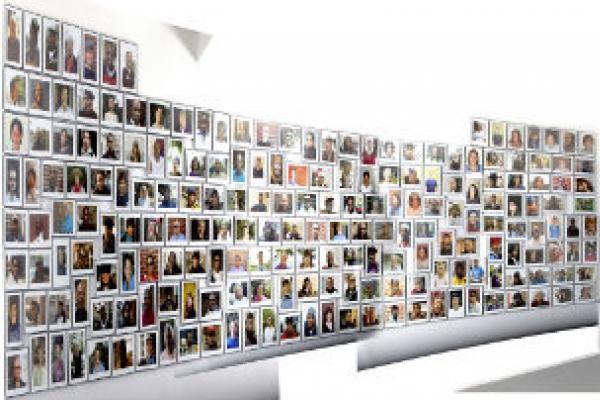Art Talk with Clarissa Sligh

As is the case with many artists, to see Clarissa Sligh's work is to see a reflection of her life. A multimedia artist and writer who works with text, photography, artist's books, and installations, Sligh gravitates towards complex themes such as race, identity, history, and memory. Her own experience with life's complicated grey areas began at an early age: in 1955, when she was just 15, Sligh's personal story intersected with national history when she became the lead plaintiff in a school desegregation case in Virginia. She later went on to work in the financial industry and at NASA before devoting herself to art in the 1980s. In the decades since, she has chronicled an individual's transition from female to male, challenged societal definitions of masculinity, probed the African-American diaspora from slavery to present day, and delved into her own role in the 1955 court case of Clarissa Thompson et. al. vs. Arlington County School Board. Sligh, who received a 1988 NEA fellowship, talked with us via e-mail about historical versus personal memory, the relationship between text and visual art, and the one artistic tool she couldn't live without.
NEA: What is your version of the artist's life?
CLARISSA SLIGH: I am often told that my work is at times too personal. But how could it be otherwise? One’s life is formed from one’s understanding of one’s world, is shaped by one’s response. To me an artist’s life is dedicated to trying to comprehend and communicate with honesty and clarity the emotions underlying experience.
NEA: What role did art play in your childhood?
SLIGH: Photography in the form of family snapshots and newspaper journalism were the primary images that I grew up with. Photographic reproductions of Paul Robeson and of the cherry trees blossoming near the Jefferson Memorial occupied prominent places on the walls in our house. My mother sent us to the neighborhood Baptist church where wall murals and funeral home fans of Jesus rounded out my young art education. But my mother’s annual spring ritual of cleaning out the beds and planting flowers and vegetables was for me the most creative of acts.
NEA: In addition to being a prolific writer, much of your visual work involves text. How do you view the relationship between words and visual art?
SLIGH: I see words as visuals similar to photographs, drawings, and paintings. The words are meant to metaphorically compliment and complicate visual images. I want the image and text patterns to convey the energy and emotions behind the work.
NEA: A lot of your work deals with memory. How do you use art to sift through both personal memory and historical memory? How do these two subjects relate to one another?
SLIGH: My life was altered dramatically when I was 15 years old. I became part of a historical narrative when my mother entered me in a 1955 school desegregation case in Virginia in which I became the lead plaintiff. The historical events took on a significance that seemed much greater than my life. Being part of that stream, I saw how the everyday actions and decisions of numerous unknown ordinary people are what change the course of history.
When we look around us, the past appears to be invisible but it is always present. For me memory is memory, whether personal or historical it is the same. Through making art I give voice to these invisible narratives.





